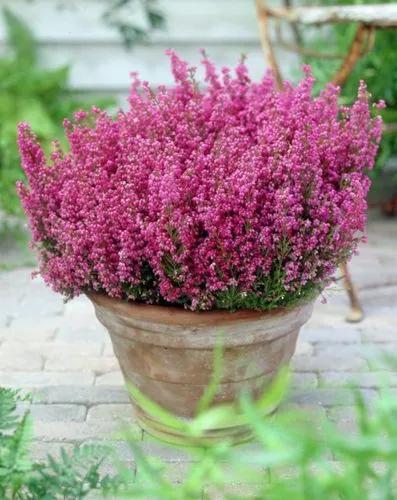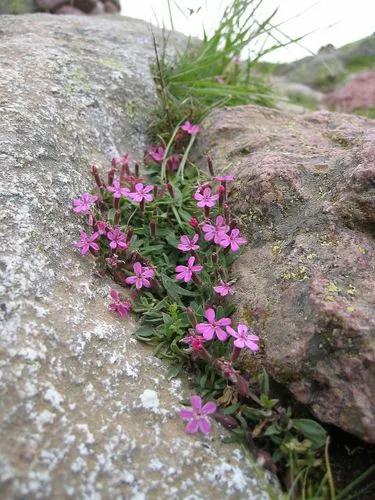Thyme is a flowering plant often used in the garden as a ground cover plant. Its fragrant leaves with flowers are common ingredients in cooking and medicine. Lucky for us plant lovers, this fragrant herb can also be grown at home!
Thyme Care
Thymus vulgaris



Thymus vulgaris grows in the southern part of Italy. It is part of the mint family Lamiaceae. This plant belongs to perennials with a straight stem reaching up to 0,66 feet (20 cm) in size. The leaves are gray-green in color. Flowers come in different shades of pink. They can also be white. In the wild, thyme can be found in forest regions.
How to Care for the Plant

Water

Thyme is inherently drought-resistant. Water it very moderately! Typically, this herb only needs a sip once every 10 days.

Pruning

In late summer or fall, you can cut off the old stems of the plant by two-thirds. Use sharp and clean tools! By doing this, you will encourage the plant's new growth.

Fertilizer

Thymus vulgaris does not require fertilizing. It primarily relies on proper compost for nourishment. However, if you decide to give your greenie some extra support, we recommend feeding it with complex mineral fertilizers half-strength. You can do it monthly during the growing season.

Sunlight

This fragrant herb is very sun-loving! Consider placing your greenie next to a south-facing window in your kitchen.

Soil

Ideally, the mixture should be well-drained and nutritious. Avoid using clay soil (it is too heavy).

Propagation

The safest way to propagate thyme is by seeds. Seeds can be found in a garden depot or collected from the plant specimen directly. Store the seeds in a dry place. Before sowing, soak them in warm water for 12 hours. Thymus plants can also be propagated by cuttings and dividing the bush (although it is not as common).

Temperature

Even though this tough herb can survive temperatures as low as 3.2°F (-16°C), don't try to freeze it deliberately and play it safe! The best conditions for thyme are 66-68˚F (19-20 °C).

Container

Thymus vulgaris doesn't have an extensive root system, so pick a pot of the appropriate size. The best choice would be a shallow clay pot. It shouldn't exceed 6 inches (15 cm) in height.

Fun fact

In ancient Greece, thyme was often used in baths and temples as an incense.

Popularity

16,551 people already have this plant 2,575 people have added this plant to their wishlists
Discover more plants with the list below
Related articles






